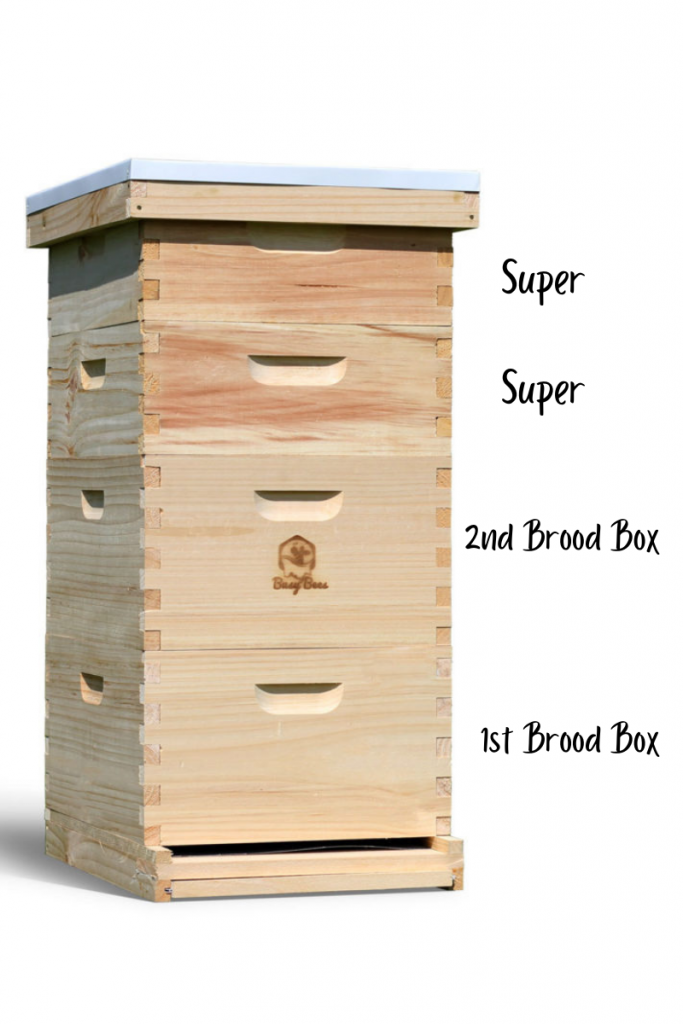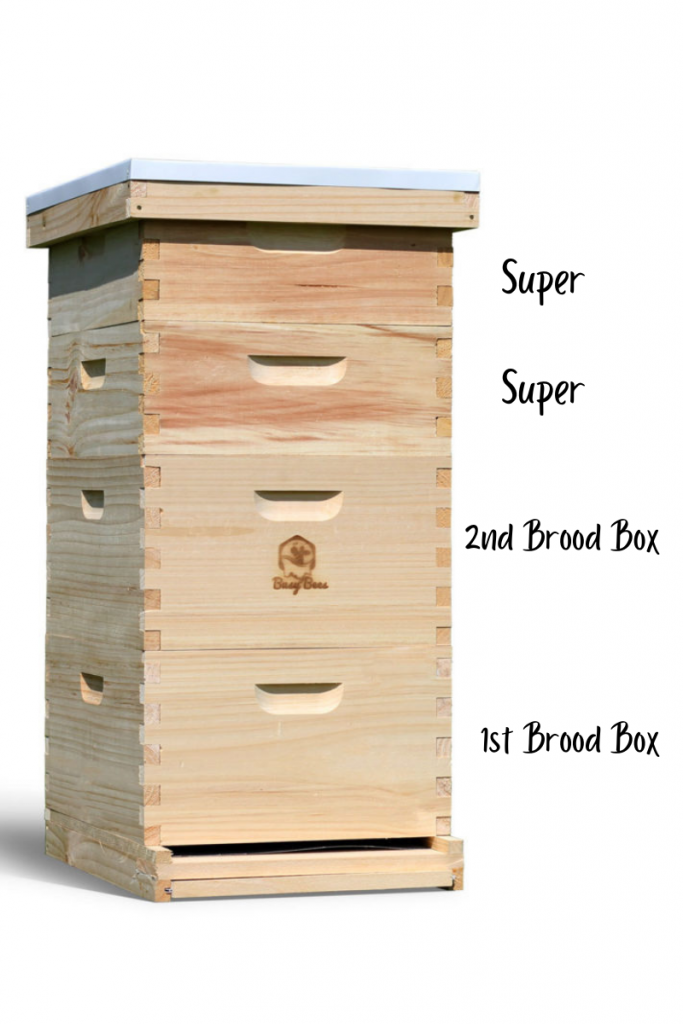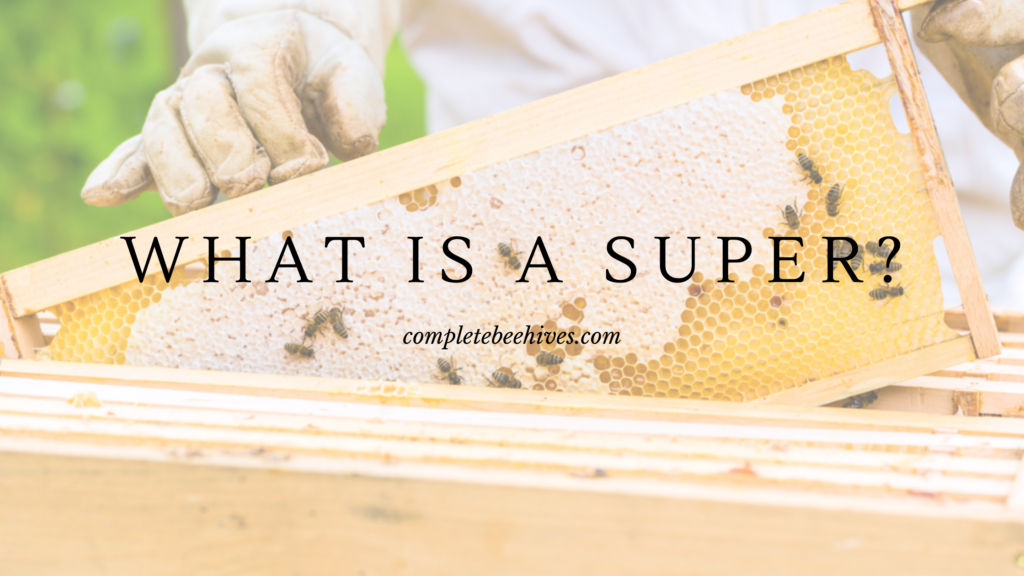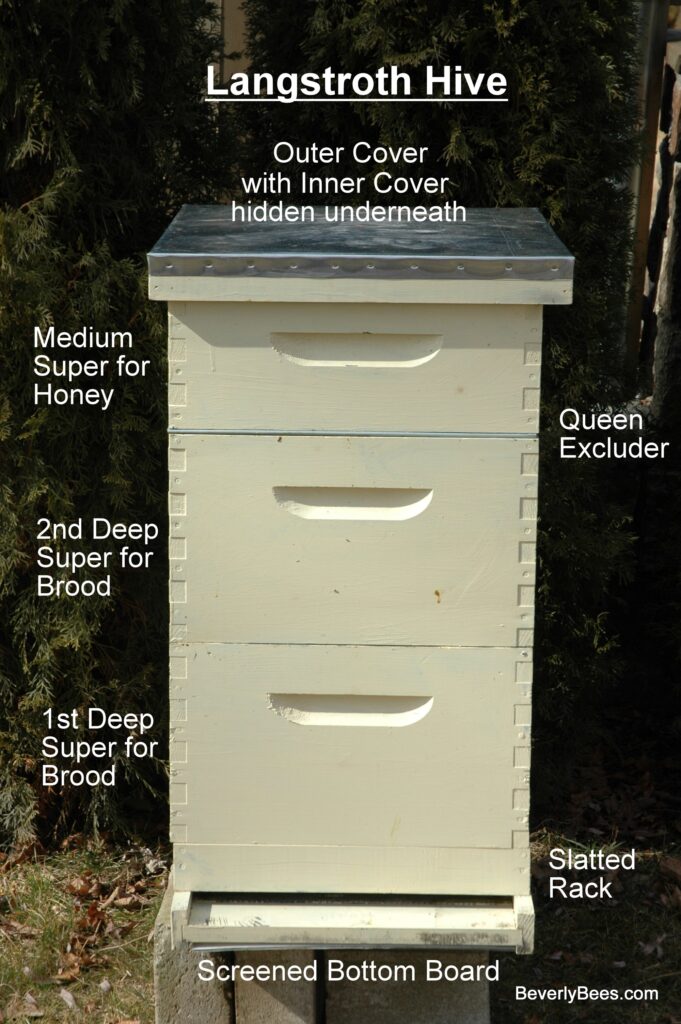
In the fascinating world of beekeeping, there exists a mysterious entity known as the super. But what exactly is a super? Well, imagine a small, rectangular box filled with honeycombs and buzzing bees, playing a vital role in the honey production process. This article will uncover the hidden secrets of a super in beekeeping and shed light on its significance in maintaining the thriving colonies of these remarkable creatures. So, get ready to embark on a journey into the enchanting realm of beekeeping, where the super holds a key place in the intricate web of bee society.
Definition of a Super in Beekeeping
A “super” in beekeeping refers to a box-like structure that is added to a beehive to provide additional space for the bees to store honey and raise their brood. It is an essential component of a hive, allowing beekeepers to efficiently manage honey production and the overall health of the colony. The super is designed to mimic the natural cavities that bees would find in a hollow tree, providing them with suitable conditions for honey storage and brood development.
Purpose of a Super
The main purpose of a super is to serve as a storage unit for surplus honey. Bees are constantly working to gather nectar from flowers, which they then process and store as honey in the comb. By adding a super to the hive, beekeepers are providing the bees with ample space to store this excess honey for future use. This surplus honey can be harvested by the beekeeper, providing a valuable product that can be enjoyed by humans.
Additionally, the super plays a crucial role in expanding the brood nest. As the colony grows, the queen needs more space to lay eggs and for the larvae to develop. By adding supers, beekeepers are ensuring that the bees have enough room to raise their brood and maintain a healthy population.

Size and Structure of a Super
Supers come in various sizes and are typically made of wood or plastic. The most common sizes are shallow supers, medium supers, and deep supers. Each size has its own advantages and is used for specific purposes within the hive.
Shallow Supers
Shallow supers are the smallest type of super and are typically used for storing honey. They have a depth of approximately 5 ¾ inches and can hold around 5-6 frames. The shallow size makes them easier to handle and extract honey from, making them a popular choice among beekeepers.
Medium Supers
Medium supers are slightly larger, with a depth of around 6 ⅝ inches. They can hold approximately 8 frames and are also used for honey storage. Medium supers are versatile and often preferred by beekeepers who want a balance between the capacity to store honey and ease of handling.
Deep Supers
Deep supers are the largest type of super, with a depth of approximately 9 ⅝ inches. They can hold around 9-10 frames and are primarily used for brood rearing. The increased depth allows for more space for the queen to lay eggs, ensuring a strong and healthy colony. Deep supers are essential for the expansion of the brood nest.
Frames and Foundation in Supers
Frames and foundation play a crucial role in the functionality of supers. They provide support for the honeycomb and serve as a guide for the bees to build their wax cells. Understanding the different types of frames and the importance of foundation is essential for effective super management.
Role of Frames
Frames are wooden or plastic structures that hold the foundation and provide structural support in the super. They allow bees to construct their wax cells in a uniform and organized manner. Frames make it easier for beekeepers to inspect the hive, manipulate the comb, and extract honey without causing damage to the hive or injuring the bees.
Types of Frames
There are various types of frames available, including wooden frames and plastic frames. Wooden frames are the traditional choice and are generally preferred by beekeepers who prioritize natural materials in their beekeeping practices. Plastic frames, on the other hand, are durable, lightweight, and require less maintenance.
Importance of Foundation
Foundation refers to the thin sheet of wax or plastic that is inserted into the frame to guide the bees in building their wax cells. It provides a base for the bees to start constructing honeycomb and helps them maintain consistent cell size. Foundation also strengthens the comb, preventing it from collapsing under the weight of honey. Beekeepers can choose between natural beeswax foundation or plastic foundation, depending on their preferences and beekeeping goals.

Adding a Super to a Hive
Knowing when and how to add a super to a hive is crucial for the overall success of the colony and honey production. By following the right procedures, beekeepers can ensure that the bees have enough space to thrive and produce abundant honey.
When to Add a Super
The timing of adding a super largely depends on the strength of the colony and the availability of nectar flow in the area. As a general guideline, it is best to add a super when approximately 80% of the frames in the existing super are drawn out and filled with honey or brood. This ensures that the bees have sufficient space to store honey and prevents overcrowding in the hive.
The nectar flow, which is the period when flowers are abundant and producing nectar, is another important factor to consider. Adding a super just before or during the nectar flow ensures that the bees have ample space to store the nectar they gather. This maximizes honey production and reduces the risk of swarming.
How to Add a Super
Adding a super to a hive is a straightforward process that requires careful consideration to avoid disturbing the bees or causing unnecessary stress. Here is a step-by-step guide on how to add a super:
- Prepare the super: Ensure that the super is clean and free from debris or any contaminants. Inspect the frames and foundation for any signs of damage or mold. Replace or repair any defective parts.
- Place the super on top: Lift the existing super(s) and gently place the new super on top. Align the frames in the new super with the frames in the existing super to maintain proper bee space.
- Remove the inner cover (if applicable): If your hive setup includes an inner cover, remove it before adding the new super. This allows the bees direct access to the new space without any obstruction.
- Replace the cover: Once the new super is added, carefully place the outer cover back on the hive, ensuring a secure fit. This ensures that the hive remains well protected from the elements.
- Monitor the activity: Regularly check the hive to ensure that the bees have accepted the new super and are using it as intended. Keep an eye on the frames in the new super to assess honey production and brood development.
By following these steps, you can add a super to your hive without causing disruption to the bees and promote a healthy and productive colony.
Super Management
Proper management of supers is essential to ensure the overall health and productivity of the hive. Beekeepers need to inspect and maintain the supers regularly and harvest honey in a timely manner.
Inspecting Supers
Regular inspections of the supers are crucial for monitoring the hive’s progress and identifying any potential issues. When inspecting supers, beekeepers should look for signs of disease, pests, and excessive drone comb. They should also assess the honey reserves and determine if additional supers are needed.
During the inspection, it is important to handle the frames carefully to avoid damaging the comb or injuring the bees. Gentle smoke can be used to calm the bees, making the inspection process smoother and minimizing the risk of stings.
Maintaining Supers
Maintaining supers involves ensuring that they remain clean and free from debris or pests. Beekeepers should regularly clean the supers, removing any excess propolis or wax buildup. This helps maintain a clean and hygienic environment for the bees and prevents the spread of diseases.
Additionally, supers should be repaired or replaced when necessary. Frames that are damaged or heavily propolized should be replaced, and any gaps or cracks in the super should be repaired to maintain the structural integrity of the hive.
Harvesting Honey from Supers
Harvesting honey from supers is the ultimate reward for beekeepers. It is crucial to time the harvest correctly to ensure that the honey is matured and capped properly. Beekeepers should aim to harvest when the majority of the honey frames are at least 80% capped.
To harvest honey from supers, beekeepers can use various methods, such as using an escape board or the “crush and strain” method. It is important to handle the frames carefully during the extraction process to avoid damaging the comb or contaminating the honey.
Harvested honey should be stored in clean, airtight containers away from heat and sunlight to maintain its quality and freshness. Properly harvested and stored honey can be enjoyed by beekeepers and shared with friends and family.

Benefits of Supers in Beekeeping
The addition of supers to a beehive offers several benefits that contribute to the overall success of beekeeping operations. Let’s explore some of the key advantages:
Increased Honey Production
With the additional space provided by the supers, bees have a larger area to store surplus honey. This allows beekeepers to extract more honey and increase their overall honey production. By maximizing honey production, beekeepers can enjoy a higher yield and potentially increase their revenue from honey sales.
Expansion of Brood Nest
Supers play a vital role in facilitating the expansion of the brood nest, which is essential for the growth and health of the colony. The queen needs ample space to lay eggs, and the brood requires sufficient room for development. By adding supers at the right time, beekeepers ensure that the colony has enough space to support a strong and thriving population.
Swarm Prevention
A well-managed super system can help prevent swarming, which occurs when a colony becomes overcrowded and the bees decide to split and form a new colony elsewhere. By providing enough space for the bees to store honey and raise their brood, beekeepers reduce the likelihood of overcrowding and swarming. This helps maintain the colony’s stability and productivity.
By harnessing these benefits, beekeepers can create a thriving beekeeping operation that supports healthy honeybee populations and bountiful honey production.
Challenges and Considerations
While supers are integral to successful beekeeping, there are certain challenges and considerations that beekeepers must be aware of. Overcoming these challenges and addressing these considerations is vital for maintaining the health and productivity of the hive.
Hive Weight
As bees fill the supers with honey, the weight of the hive can increase significantly. This can pose challenges during inspections and honey harvests. It is important for beekeepers to ensure that the hive components, particularly the stands and flooring, are sturdy enough to handle the weight of fully loaded supers. Regular monitoring of hive weight is essential to prevent structural damage and ensure the safety of both beekeepers and the bees.
Pest and Disease Control
With the increased availability of honey and brood, supers can become vulnerable to pests and diseases. Beekeepers need to have effective pest management strategies in place to mitigate issues such as Varroa mites, wax moths, and small hive beetles. Regular monitoring, treatment, and proper hygiene practices are crucial for preventing infestations and minimizing the impact of diseases on the colony.
Weather Conditions
Weather conditions can influence the availability of nectar flow and impact honey production. Extreme temperatures, drought, or excessive rainfall can all affect the bees’ ability to gather nectar, which in turn affects the need for supers. Beekeepers need to closely monitor weather patterns and adjust their super management strategies accordingly. This may involve adding or removing supers to ensure optimal honey production and colony health.
By recognizing and addressing these challenges and considerations, beekeepers can navigate potential hurdles and maintain successful super management.

Common Mistakes with Supers
While supers are a valuable component of beekeeping, there are some common mistakes that beekeepers make that can hinder optimal hive performance.
Inadequate Super Population
A common mistake is not providing enough supers to accommodate the colony’s growth and honey production. Failing to add supers in a timely manner can lead to overcrowding, swarming, or the bees storing excess honey in inconvenient locations within the hive. Beekeepers should closely monitor the hive’s population and honey stores and add supers as needed to ensure the bees have ample space.
Improper Super Placement
Placing supers incorrectly can also cause problems within the hive. If the frames are not aligned properly, it can disrupt the bees’ movements and hinder efficient honey storage. Beekeepers should ensure that the frames in the new super align with the existing frames, maintaining proper bee space for optimal functioning.
Neglecting Super Maintenance
Regular maintenance and inspections of supers are crucial for the overall health and functionality of the hive. Neglecting to clean or repair supers can lead to the accumulation of debris, wax moth infestations, or structural damage. Beekeepers should prioritize regular maintenance, cleaning, and repair to keep the supers in optimal condition.
By avoiding these common mistakes, beekeepers can maximize the benefits of supers and create a harmonious and productive beekeeping environment.
Frequently Asked Questions about Supers
How many supers should I have?
The number of supers required depends on various factors, such as the strength of the colony, nectar flow, and beekeeping goals. As a general guideline, beekeepers usually start with one or two supers and add more as needed. Regular monitoring of honey stores and population growth will help determine the appropriate number of supers for your hive.
When should I remove a super?
Supers should be removed when the frames are mostly capped with honey and no more nectar flow is expected. This ensures that the honey is properly matured and ready for extraction. Leaving supers on the hive for too long can lead to honey fermentation or potential pests and diseases. Regular inspections will help determine the right time to remove a super.
Can I reuse frames and foundation?
Frames and foundation can be reused, but it is essential to ensure they are in good condition and free from contaminants. Frames should be inspected for any damage or mold, and foundation should be free from deformities. Proper cleaning and disinfection of frames and foundation can help prevent the spread of diseases.

Conclusion
In conclusion, a super is a crucial component in beekeeping, providing additional space for honey storage and brood rearing. Understanding the different types of supers, frames, and foundation, as well as proper super management techniques, is key to maintaining a healthy and productive beehive.
By adding supers at the right time and ensuring regular inspections and maintenance, beekeepers can enjoy increased honey production, an expanded brood nest, and reduced risk of swarming. While there are challenges and considerations to navigate, being mindful of hive weight, pest and disease control, and weather conditions will contribute to successful super management.
Avoiding common mistakes, such as inadequate super population, improper super placement, and neglecting maintenance, will further optimize the functionality of supers. And by addressing frequently asked questions about supers, beekeepers can gain a better understanding of their role in beekeeping.
So, whether you are an experienced beekeeper or just starting your beekeeping journey, embrace the benefits of supers and enjoy the sweet rewards of honey production.